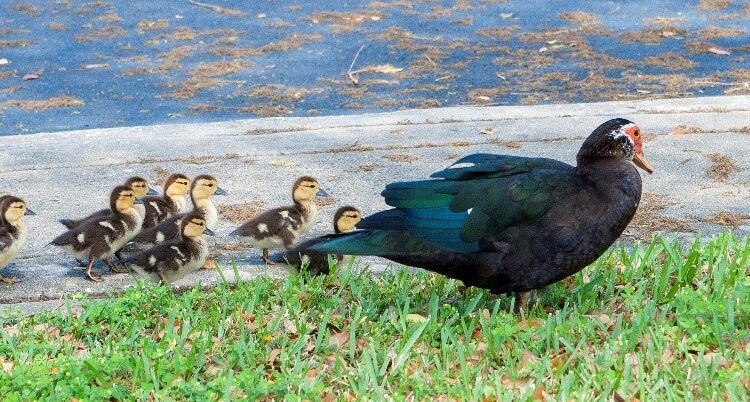Pictured is a “dom-wild-icated” hen with babies
By Dan Jordan, Jordan’s Photography and Consulting
Until recently, when I thought of ducks, I kind of lumped them into one category—DUCKS. Sure, I knew of mallards and I’d heard of wood ducks, but I never paid that much attention. When I saw a duck on a pond or a group of them fly by, they were just ducks to me.
That has changed. Perhaps it’s my increased interest in wildlife photography that has taken me by storm in the last couple of years. Perhaps it’s because of my newfound interest in birding. Probably it’s my discovery of the beauty of these waterfowl. Maybe it’s a combination of all these factors.
There are so many duck species out there. So many of them can be seen in our area too. Entire books have been written just about ducks. In this article I will not attempt to dig deeper into the duck waters (so-to-speak) than I have waded with my camera.
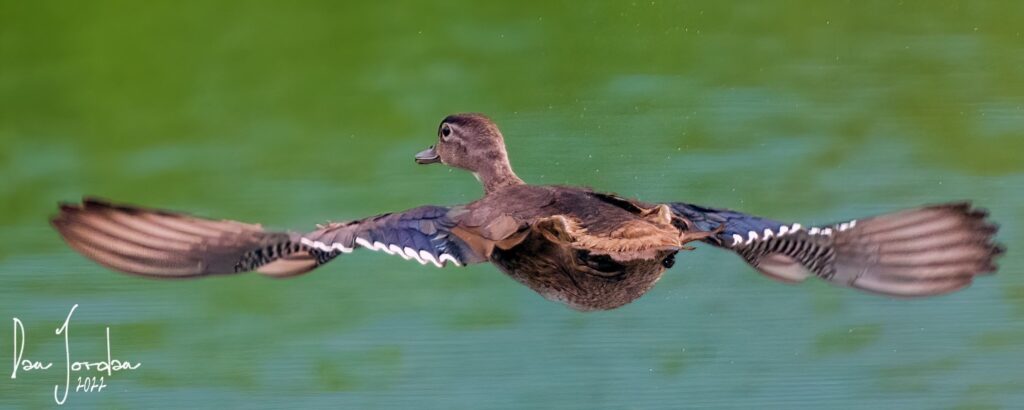
When I photograph a species (bird, mammal, or whatever) that I cannot identify or about which I know little, the first thing I do, even before editing photos, is to do some research. Being a scientist, this comes naturally to me. Also, writing about wildlife means that I need to know a little something about the subject before composing the articles. As I’ve aged, my thirst for knowledge has increased astronomically, so this research is something that I enjoy.
This winter has been a bonanza for me regarding duck species. I have photographed three species of ducks which, as far as I can remember, I had not seen before. For sure, I had not photographed them before. So, in addition to some general facts about ducks, I will get into these new (to me) species of ducks so that you may look for them too. Perhaps, you have known about these beautiful species before me. In that case, just enjoy the photos.
So, what is a duck and how do ducks differ from other waterfowl? I’m sure you’ve heard the quote from Robin Cook, which goes like “if it looks like a duck, and quacks like a duck, then it must be a duck”. Well, perhaps not, Robin.
- Ducks have broad, flattened bills.
- Ducks have wide, strongly webbed feet which have talons to grip slippery surfaces.
- Ducks are much smaller than their relatives, the swans and geese.
- Ducks have shorter necks than their aforementioned relatives.
- Ducks’ bodies are streamlined for efficient swimming and temperature control.
Other interesting facts about ducks:
- Ducks can be diving ducks, which dive and swim underwater for their food sources. Or they can be dabbling ducks, which go “tail-up” on the surface of the water. Dabblers can only reach food as far as their necks stretch from this “tail-up” position. Dabblers’ feet are generally smaller than the stronger swimming diving ducks.
- Diving duck species include the mergansers, bufflehead ducks, canvasback ducks, and the scaups.
- Dabbling duck species include mallards, blue-winged teals, and northern pintails.
- Ducks take dimorphism to the max. Male ducks often exhibit garish feather displays of colors and patterns. Females normally exhibit subdued colors, often earth tones, to help guard against predators.
- Interestingly, ducks interbreed with other species of ducks, creating hybrid species. They even breed with domestic ducks. These crossbred species (or hybrid species) are difficult to identify and categorize.
- Some duck species are strictly herbivores while others are carnivores, eating fish, crustaceans, and the like. Still others are omnivores, eating whatever is available in their habitat.
- Ducks’ feet lack nerves and blood vessels and therefore do not feel the cold.
- Ducks’ eyes are on the sides of their head, giving them nearly 340 degrees of vision.
- Ducks can sleep with one eye open to guard against predation. Note: this helps explain one of the photos later in this article.
These are just a sampling of duck facts. I encourage you to read and learn more about these interesting and beautiful waterfowl.
There are lots of other waterfowl that share some traits with ducks but are not classified as ducks. This list includes, but is not limited to cormorants, coots, geese, loons, swans, and grebes.
Let’s get into some photos, shall we?
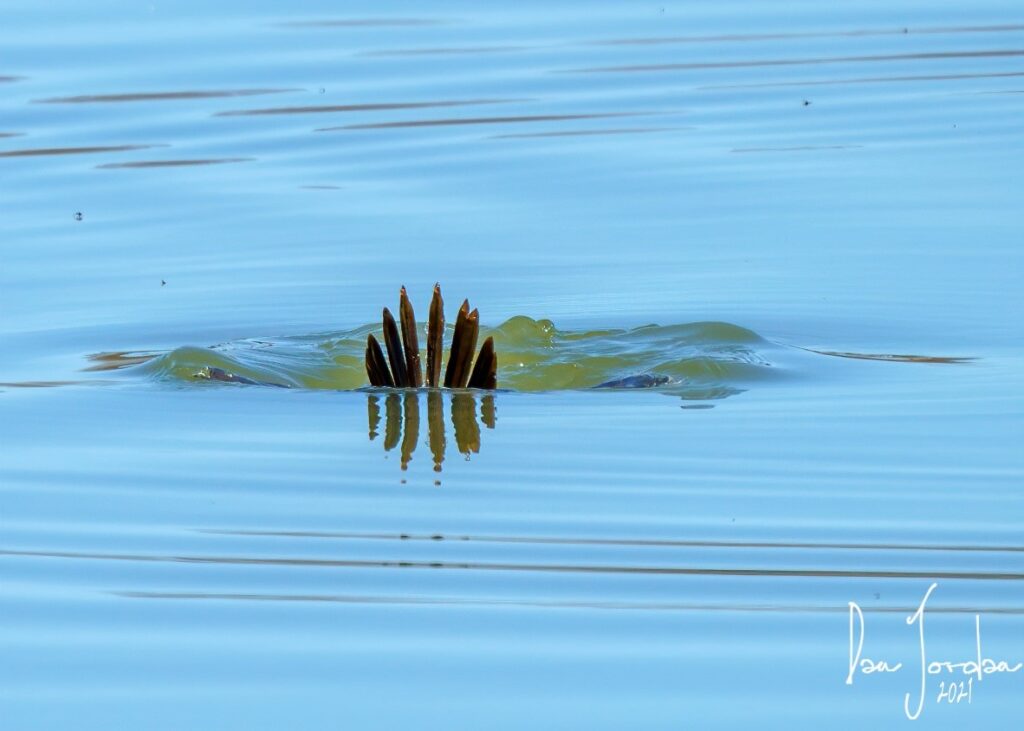
This comical photo shows a female ruddy duck as it dove into the pond. (note that I did not identify her from this photo, but rather the ones before she dove. This is clearly not a dabbling duck! A split second later, the tail disappeared as the duck swam underwater after a meal.
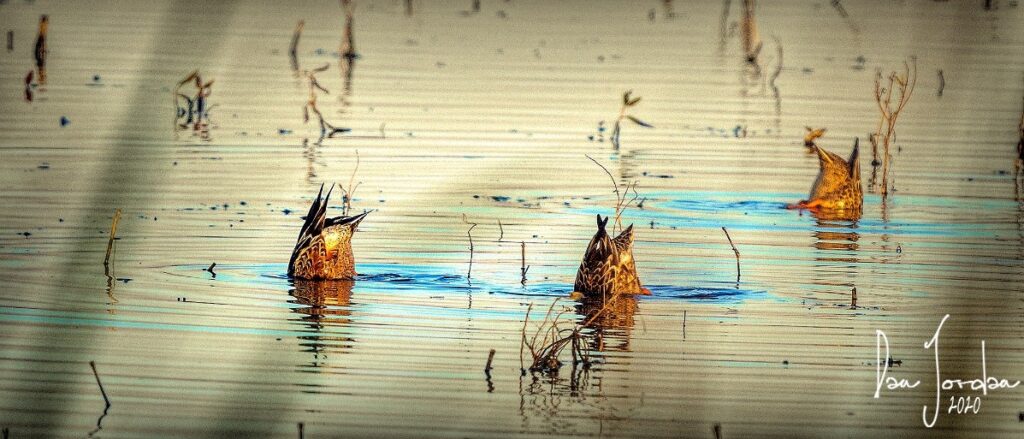
This photo shows some dabbling ducks, well………dabbling. (species unknown to me)
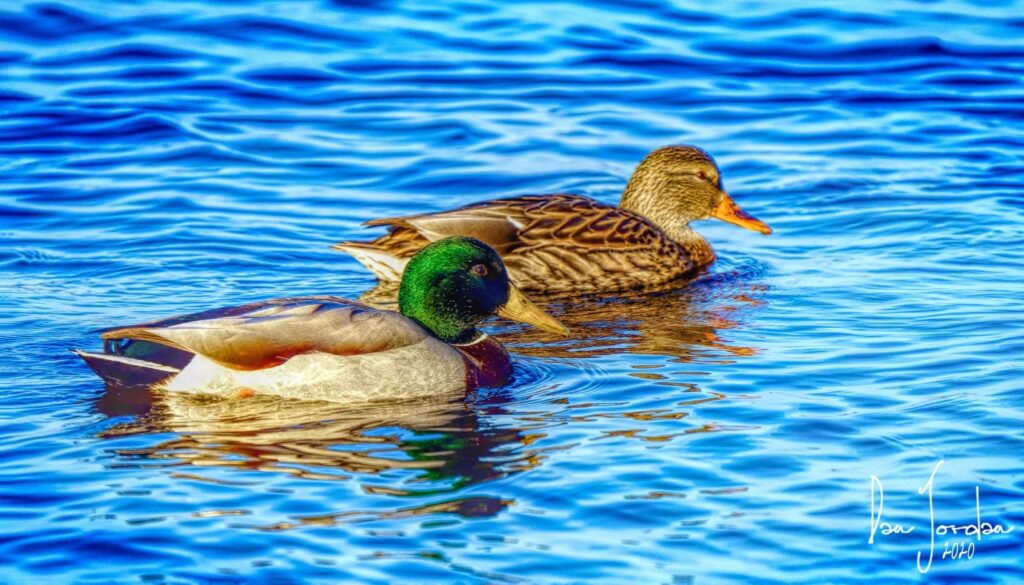
This photo shows a pair of mallard ducks, dabblers by nature.
Here is a species I photographed at Montezuma National Wildlife Refuge last year for the first time. It is a ring-necked duck.
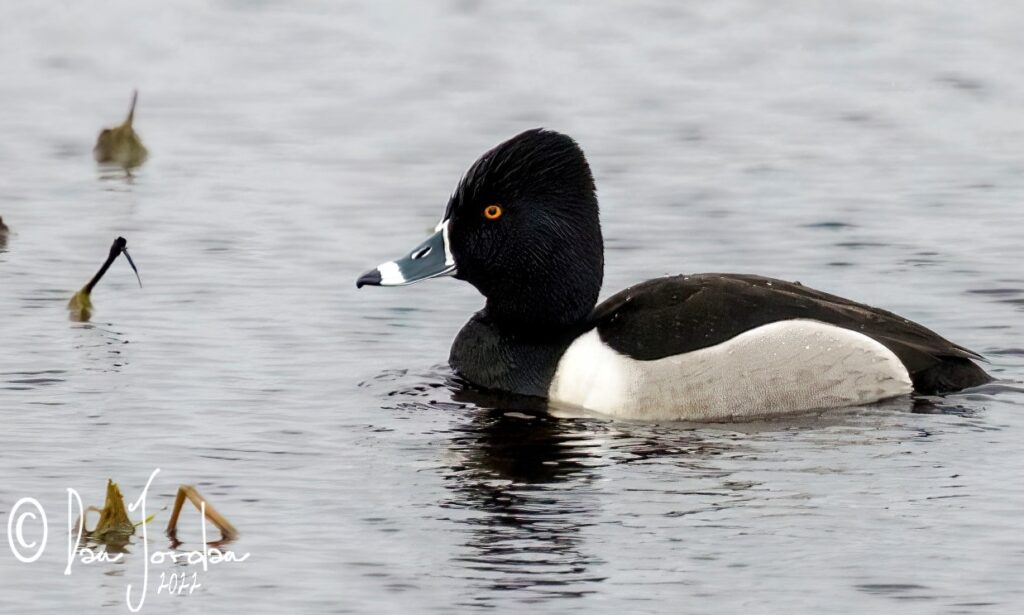
I mentioned early in the article that I had found three new species (to me) this winter. They may be common species, but I had not photographed them before. Here they are. First is a male greater scaup. It is a diving duck. I photographed this at Mystic Water Resort on March 11, 2023. It slept while floating for nearly 30 minutes while I photographed it. It was aware of my presence and opened an eye (alternating) every so often to keep me under surveillance.
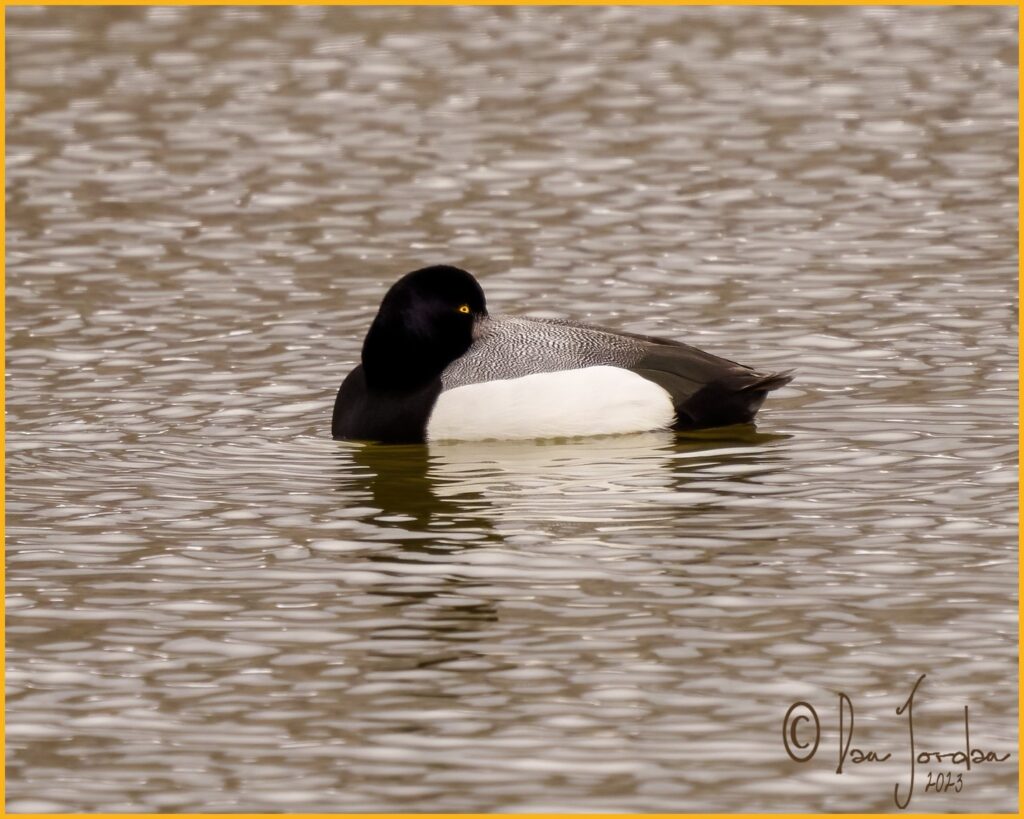
The next find for me, also at Mystic Water Resort, was a male hooded merganser. Such a beautiful bird!
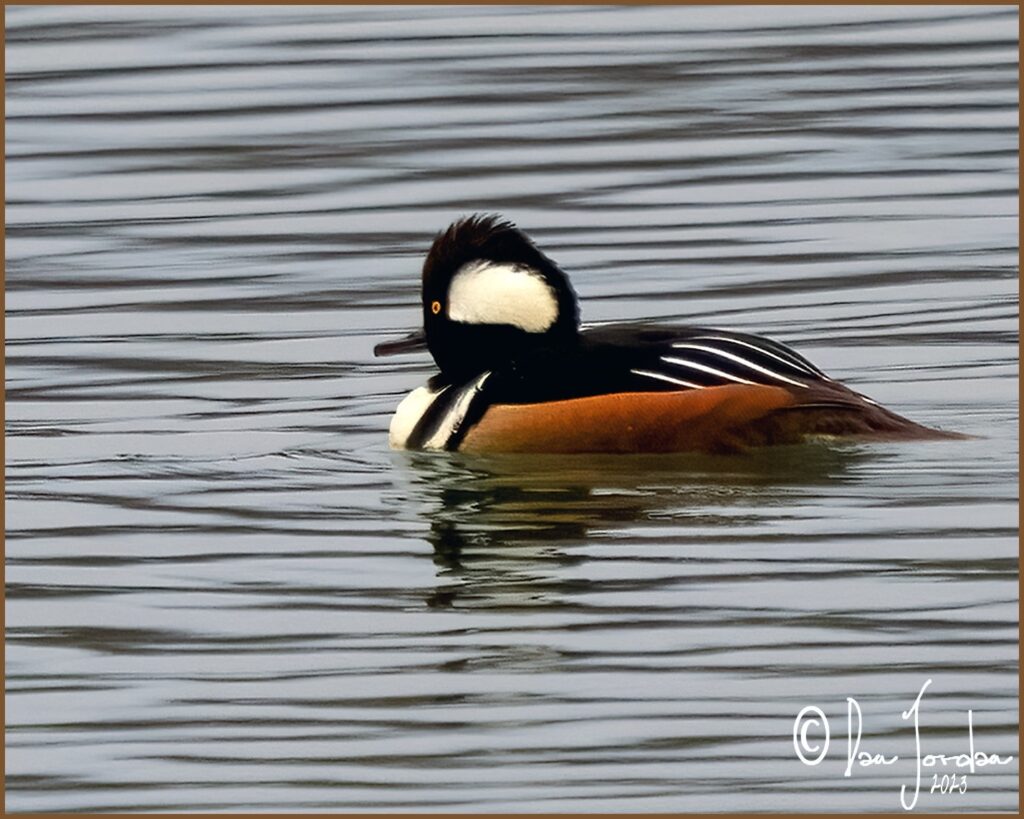
And the last, also a merganser, is the common merganser. Now that I’ve photographed one, I see them everywhere. On the Allegheny River, on the Genesee River, in lakes, and in ponds. It makes me wonder how I have missed these beautiful birds in the past. These mergansers exhibit sexual dimorphism, although in their case, the females are quite vibrant in their own right. I love the “red hair” of the female common merganser.
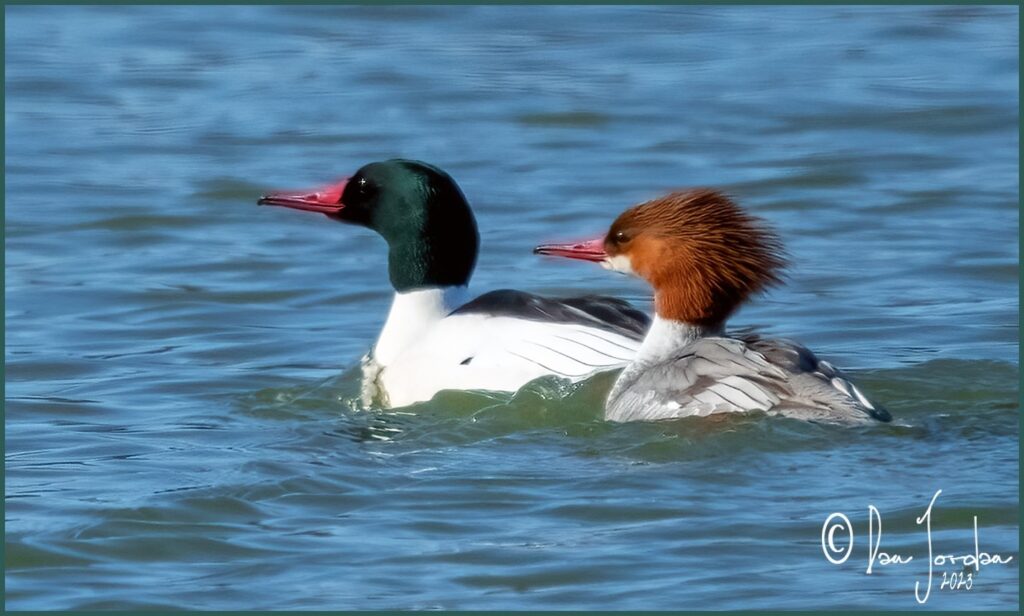
And if you’ve not seen a merganser take off from the water, it is comical. They actually run across the surface until their wing flaps can generate enough speed for lift off. Here’s but one example photo of that process.
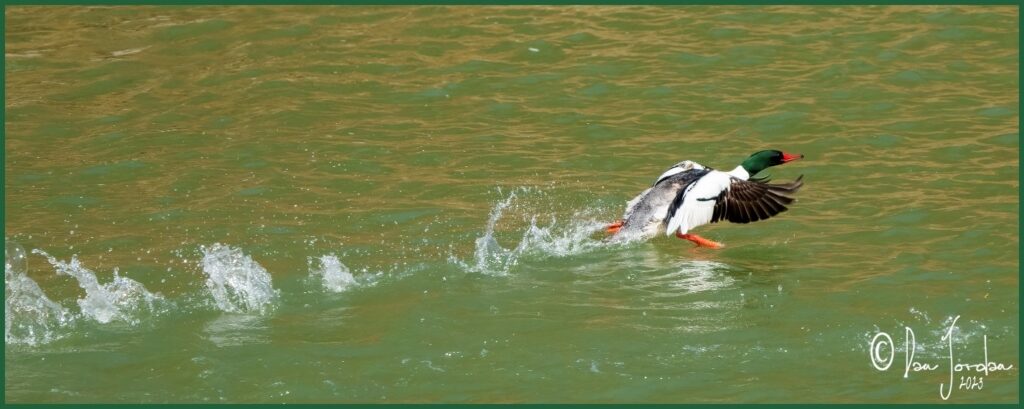
So, there you have it, another edition of my Wild World series. As I always say, keep your eyes open when out in the wild, you never know what you will see. But if you see tails in the vertical position, you have dabblers. If you don’t see anything, you may have a diver. Wait up to 30 seconds to see if a duck surfaces. You might even see a diving duck surface with a fish in its beak.


